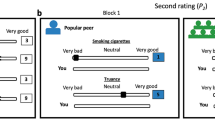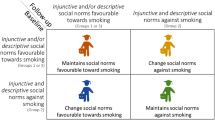Abstract
Network interventions can help to achieve behavioural change by inducing peer-pressure in the network. However, inducing peer-pressure without considering the structure of the existing social network may render the intervention ineffective or weaker. In a seven-week school-based field experiment using preadolescents’ physical activity as a proxy for estimating behavioural change, we test the hypothesis that boys’ and girls’ distinct networks are susceptible to different social incentives. We run three different social-rewards schemes, in which classmates’ rewards depend on the physical activity of two friends either reciprocally (directly or indirectly) or collectively. Compared with a random-rewards control, social-rewards schemes have an overall significantly positive effect on physical activity (51.8% increase), with females being more receptive to the direct reciprocity scheme (76.4%) and males to team (collective) rewards (131.5%). Differences in the sex-specific sub-networks can explain these findings. Network interventions adapted to the network-specific characteristics may constitute a powerful tool for behavioural change.
This is a preview of subscription content, access via your institution
Access options
Access Nature and 54 other Nature Portfolio journals
Get Nature+, our best-value online-access subscription
$29.99 / 30 days
cancel any time
Subscribe to this journal
Receive 12 digital issues and online access to articles
$119.00 per year
only $9.92 per issue
Buy this article
- Purchase on Springer Link
- Instant access to full article PDF
Prices may be subject to local taxes which are calculated during checkout




Similar content being viewed by others
Data availability
The datasets generated and analysed during this study are available from the corresponding author upon request.
References
Sinan, A. & Walker, D. Identifying influential and susceptible members of social networks. Science 337, 337–341 (2012).
Centola, D. & Macy, M. Complex contagions and the weakness of long ties. Am. J. Sociol. 113, 702–734 (2007).
Valente, T. W. Network interventions. Science 337, 49–53 (2012).
Eckles, D., Karrer, B. & Ugander, J. Design and analysis of experiments in networks: reducing bias from interference. J. Causal Inference 5, 20150021 (2017).
Benenson, J., Apostoleris, N. & Parnass, J. The organization of children’s same‐sex peer relationships. New Dir. Child Adolesc. Dev. 1998, 5–23 (1998).
Mehta, M. C. & Strough, J. N. Sex segregation in friendships and normative contexts across the life span. Dev. Rev. 29, 201–220 (2009).
Rose, A. J. & Rudolph, K. D. A review of sex differences in peer relationship processes: potential trade-offs for the emotional and behavioral development of girls and boys. Psychol. Bull. 132, 98 (2006).
Carrell, S. E., Hoekstra, M. & West, J. E. Is poor fitness contagious? Evidence from randomly assigned friends. J. Public Econ. 95, 657–663 (2011).
Cohen-Cole, E. & Fletcher, J. M. Is obesity contagious? Social networks vs. environmental factors in the obesity epidemic. J. Health Econ. 27, 1382–1387 (2008).
Christakis, N. A. & Fowler, J. H. The spread of obesity in a large social network over 32 years. New Engl. J. Med. 357, 370–379 (2007).
De La Haye, K., Robins, G., Mohr, P. & Wilson, C. How physical activity shapes, and is shaped by, adolescent friendships. Soc. Sci. Med. 73, 719–728 (2011).
Cialdini, R. B., Kallgren, C. A. & Reno, R. R. A focus theory of normative conduct: A theoretical refinement and reevaluation of the role of norms in human behavior. Adv. Exp. Soc. Psychol. 24, 201–234 (1991).
Schultz, P. W., Nolan, J. M., Cialdini, R. B., Goldstein, N. J. & Griskevicius, V. The constructive, destructive, and reconstructive power of social norms. Psychol. Sci. 18, 429–434 (2007).
Morris, S. Contagion. Rev. Econ. Stud. 67, 57–78 (2000).
Calvó‐Armengol, A. & M. O. Jackson, M. O. Peer pressure. J. Eur. Econ. Assoc. 8, 62–89 (2010).
Deci, E. L. Effects of externally mediated rewards on intrinsic motivation. J. Pers. Soc. Psychol. 18, 105 (1971).
Gneezy, U., Meier, S. & Rey-Biel, P. When and why incentives (don’t) work to modify behavior. J. Econ. Perspect. 25, 191–210 (2011).
Valente, T. W. Social Networks and Health: Models, Methods, and Applications (Oxford Univ. Press, New York, 2010).
Pickard, G. et al. Time-critical social mobilization. Science 334, 509–512 (2011).
Centola, D. An experimental study of homophily in the adoption of health behavior. Science 334, 1269–1272 (2011).
Leider, S., Möbius, M., Rosenblat, T. & Do, A. Q. Directed altruism and enforced reciprocity in social networks. Q. J. Econ. 124, 1815–1851 (2009).
Rand, D., Dreber, A., Ellingsen, T., Fudenberg, D. & Nowak, M. A. Positive interactions promote public cooperation. Science 325, 1272–1275 (2009).
Nowak, M. A. Five rules for the evolution of cooperation. Science 314, 1560–1563 (2006).
Mani, A., Rahwan, I., & Pentland, A. Inducing peer pressure to promote cooperation. Sci. Rep. 3, 1735 (2013).
Aharony, N., Pan, W., Ip, C., Khayal, I. & Pentland, A. Social fMRI: investigating and shaping social mechanisms in the real world. Pervasive Mobile Comput. 7, 643–659 (2011).
Bandiera, O., Barankay, I. & Rasul, I. Team incentives: evidence from a firm level experiment. J. Eur. Econ. Assoc. 11, 1079–1114 (2013).
Nowak, M. A., Tarnita, C. E. & Antal, T. Evolutionary dynamics in structured populations. Philos. Trans. R. Soc. Lond. B 365, 19–30 (2010).
Rand, D. G., Arbesman, S. & Christakis, N. A. Dynamic social networks promote cooperation in experiments with humans. Proc. Natl Acad. Sci. USA 108, 19193–19198 (2011).
Mountjoy, M. et al. International Olympic Committee consensus statement on the health and fitness of young people through physical activity and sport. Br. J. Sports Med. 45, 839–848 (2011).
Metcalf, B., William, H., & Wilkin, T. Effectiveness of intervention on physical activity of children: systematic review and meta-analysis of controlled trials with objectively measured outcomes (EarlyBird 54). BMJ 345, e5888 (2012).
Babcock, P., Bedard, K., Charness, G., Hartman, J. & Royer, H. Letting down the team? Social effects of team incentives. J. Eur. Econ. Assoc. 13, 841–870 (2015).
Yoeli, E., Hoffman, M., Rand, D. G. & Nowak, M. A. Powering up with indirect reciprocity in a large-scale field experiment. Proc. Natl Acad. Sci. USA 110(Suppl. 2), 10424–10429 (2013).
Greiner, B. & Levati, M. V. Indirect reciprocity in cyclical networks: an experimental study. J. Econ. Psychol. 26, 711–731 (2005).
Charness, G. & Gneezy, U. Incentives to exercise. Econometrica. 77, 909–931 (2009).
Acland, D. & Levy, M. R. Naiveté, projection bias, and habit formation in gym attendance. Manage. Sci. 61, 146–160 (2015).
Troiano, R. P. et al. Physical activity in the United States measured by accelerometer. Med. Sci. Sports Exerc. 40, 181–188 (2007).
Krackhardt, D., & Stern, R. N. Informal networks and organizational crises: an experimental simulation. Soc. Psychol. Q 51, 123–140 (1988).
Evenson, K. R., Catellier, D. J., Gill, K., Ondrak, K. S. & McMurray, R. G. Calibration of two objective measures of physical activity for children. J. Sport Sci. 26, 1557–1565 (2008).
Ledyard, J. O. in Handbook of Experimental Economics (eds Kagel, J. & Roth, A.) 111–194 (Princeton Univ. Press, Princeton, 1995).
Winkler, E. A. H. et al. Identifying sedentary time using automated estimates of accelerometer wear time. Br. J. Sports Med. 46, 436–442 (2012).
Choi, L., Liu, Z., Matthews, C. E., & Buchowski, M. S. Validation of accelerometer wear and nonwear time classification algorithm. Med. Sci. Sports Exerc. 43, 357–364 (2011).
Kruskal, W. H. & Wallis, W. A. Use of ranks in one-criterion variance analysis. J. Am. Stat. Assoc. 47, 583–621 (1952).
Mann, H. B., & Whitney, D. R. On a test of whether one of two random variables is stochastically larger than the other. Ann. Math. Stat. 18, 50–60 (1947).
French, J. in Research Methods in the Behavioral Sciences (eds Festinger, L. & Katz, D.) Ch. 3 (Holt, Rinehart & Winston, New York, 1953).
Zizzo, D. J. Experimenter demand effects in economic experiments. Exp. Econ. 13, 75–98 (2010).
Wedekind, C. & Milinski, M. Cooperation through image scoring in humans. Science 288, 850–852 (2000).
Baines, E. & Blatchford, P. Sex differences in the structure and stability of children’s playground social networks and their overlap with friendship relations. Br. J. Dev. Psychol. 27, 743–760 (2009).
Howes, C., Chamberlain, B. & Lee, L. Ethnic heterogeneity of social networks and cross-ethnic friendships of elementary school boys and girls. Merrill. Palmer. Q. 53, 325–346 (2007).
Freedson, P. S., Pober, D., & Janz, K. F. Calibration of accelerometer output for children. Med. Sci. Sports Exerc. 37, S523–S530 (2005).
Trost, S. G., Loprinzi, P. D., Moore, R., & Pfeiffer, K. A. Comparison of accelerometer cut points for predicting activity intensity in youth. Med. Sci. Sports Exerc. 43, 1360–1368 (2011).
Dössegger, A. et al. Reactivity to accelerometer measurement of children and adolescents. Med. Sci. Sports. Exerc. 46, 1140 (2014).
Frey, E. & Rogers, T. Persistence: how treatment effects persist after interventions stop. Policy Insights Behav. Brain Sci. 1, 172–179 (2014).
van der Linden, S. The nature of viral altruism and how to make it stick. Nat. Hum. Behav. 1, 0041 (2017).
Torgerson, W. S. Multidimensional scaling: I. Theory and method. Psychometrika 17, 401–409 (1952).
Camerer, C., & Hogarth, R. M. The effects of financial incentives in experiments: a review and capital-labor-production framework. J. Risk Uncertain. 19, 7–42 (1999).
Acknowledgements
We thank S. Gächter, A. M. Espin, S. Kriemler, F. Exadaktylos, E. Yoeli, E. Woelbert, S. Stoffel and J. Fooken for discussions and feedback. We also thank C. Merletti representing the Ufficio Scolastico Territoriale per la Lombardia for his authorization and ethical approval for this study in schools under his responsibility. We thank P. Benetti from the same office for coordinating communication with all school directors, teachers, parental associations and students’ parents. We finally thank all the school directors and teachers involved, and all the parents and the children who agreed voluntarily to participate in this study (Scuola Primaria “G. Galilei”, Ispra; Scuola Primaria “S. Pellico”, Ranco; Scuola Primaria “G. Pascoli”, Taino; Scuola Primaria “D. Alighieri”, Angera; Scuole Primarie “G. Ungaretti” and “G. Matteotti”, Sesto Calende; Scuola Primaria “D. Alighieri” Golasecca; Scuola Primaria “A. Manzoni” Mercallo; Scuola Primaria “L. Scotti” Laveno; Scuola Primaria” G. de Amicis” Vergiate; Scuola Primaria “G. Wojtyla” Cimbro; Scuola Primaria “S. Tamborini” Varano Borghi; Scuola Primaria “A. Liborio” Comabbio, Scuola Primaria “A. Manzoni” Malgesso). This research was exclusively funded by the European Commission. The supply of the technical equipment (accelerometers) and the contributions of H.B. and E.v.S. were supported by the Medical Research Council (MC_UU_12015/7), and the Centre for Diet and Activity Research (CEDAR), a UKCRC Public Health Research Centre of Excellence (RES-590-28-0002). Funding from the British Heart Foundation, Department of Health, Economic and Social Research Council, Medical Research Council and the Wellcome Trust, under the auspices of the UK Clinical Research Collaboration is acknowledged. The funders had no role in study design, data collection and analysis, decision to publish or preparation of the manuscript. Any opinions expressed in this article are those of the authors and not of the European Commission or any other involved institute affiliated by the authors. Data on physical activity and bilateral friendships are provided by the authors upon request.
Author information
Authors and Affiliations
Contributions
A.P., B.H., A.M. and S.C. developed the concept. A.P., E.P.d.S. and B.H. designed the experiments. A.P., B.H., E.P.d.S. and S.C. obtained the ethical approval and the authorization from the data protection officer. E.P.d.S., S.C. and A.P. recruited the students and took permissions from the schools’ directors/teachers. E.P.d.S. and A.P. performed the experiments. H.E.B and E.v.S. led on physical activity measurement and processing. A.P., E.P.d.S. and A.M. analysed the data. B.H. supervised the study. A.P., S.C., E.v.S., H.E.B, E.P.d.S, B.H. and A.M. wrote the paper.
Corresponding author
Ethics declarations
Competing interests
The authors declare no competing interests.
Additional information
Publisher’s note: Springer Nature remains neutral with regard to jurisdictional claims in published maps and institutional affiliations.
Supplementary information
Supplementary Information
Supplementary Figures 1–18, Supplementary Tables 1–7, Supplementary Note, Supplementary Methods
Rights and permissions
About this article
Cite this article
Proestakis, A., di Sorrentino, E.P., Brown, H.E. et al. Network interventions for changing physical activity behaviour in preadolescents. Nat Hum Behav 2, 778–787 (2018). https://doi.org/10.1038/s41562-018-0436-y
Received:
Accepted:
Published:
Issue Date:
DOI: https://doi.org/10.1038/s41562-018-0436-y
This article is cited by
-
Reducing gunshot victimization in high-risk social networks through direct and spillover effects
Nature Human Behaviour (2019)



